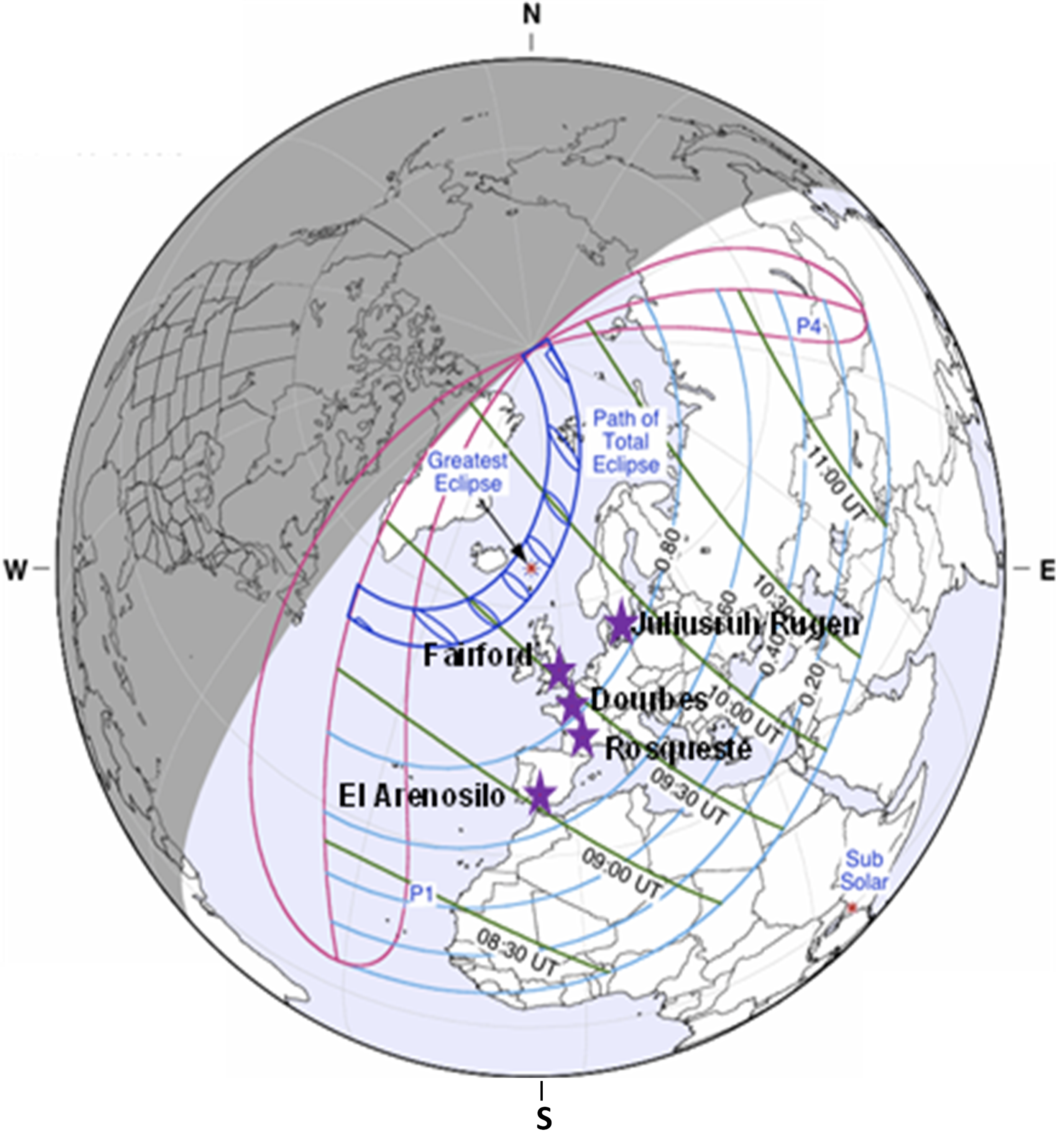Pattern and variation of electron ionisation gradient as related to the plasma distribution mechanisms during the total solar eclipse of March 20, 2015
Abstract
The pattern and electron ionisation gradient associated with the obstruction of solar ionizing radiation (SIR) provided a good opportunity to study the plasma movements and neutral compositions during the solar eclipse at mid-latitude. The electron ionisation gradient (dN/dh) as related to the plasma distributions at the mid-latitudes during the total solar eclipse of 20 March 2015 was investigated. The ionogram inversion profile data for each station along the solar eclipse path were obtained from the database of the Global Ionospheric Radio Observatory (GIRO). The solar eclipse's obscuration percentage at these locations ranges from 69% to 94%. The variations in the dN/dh and its corresponding height hdN during the eclipse window are related to the solar eclipse’s turnoff and onset effect on SIR. The ionisation gradient valley caused by the solar eclipse was associated with the vertical transport and diffusion processes. The dN/dh varies correspondingly with NmF2, responding to changes in photoionisation, and the peak responses occurred 11 – 20 mins after the eclipse’s totality. The height (hdN) at which the maximum ionisation gradient was obtained followed a similar pattern to hmF2, but the peak response of hdN is lower across all stations. In contrast to the hmF2, the time lag between the ionisation gradient's minimum peak and the eclipse's maximum magnitude ranges from 25 to 40 mins. The neutral composition changes and plasma movements during the solar eclipse can be explained by dN/dh.

Published
How to Cite
Issue
Section
Copyright (c) 2025 B. J. Adekoya, B. O. Adebesin, V. U. Chukwuma, S. J. Adebiyi, S. O. Ikubanni, H. T. Oladunjoye, E. O. Adekoya

This work is licensed under a Creative Commons Attribution 4.0 International License.
How to Cite
Most read articles by the same author(s)
- B. O. Adebesin, J. O. Adeniyi, I. A. Adimula, S. J. Adebiyi, S. O. Ikubanni, B. J. Adekoya, Current Understanding of the Equatorial E x B Drift velocities in the African Sector: A Short Review , Journal of the Nigerian Society of Physical Sciences: Volume 4, Issue 1, February 2022
- T. O. Roy-Layinde, K. O. Olonade, K. A. Omoteso, H. T. Oladunjoye, B. A. Oyero, J. A. Laoye, Exploring vibrational resonance in biophysical systems with fractional-order damping , Journal of the Nigerian Society of Physical Sciences: Volume 7, Issue 3, August 2025







